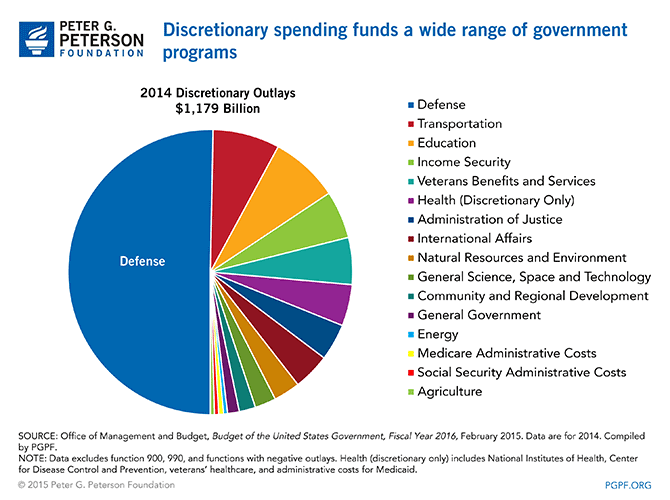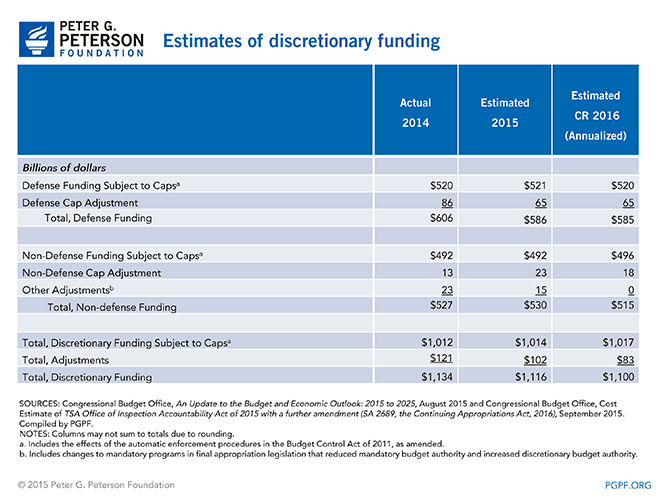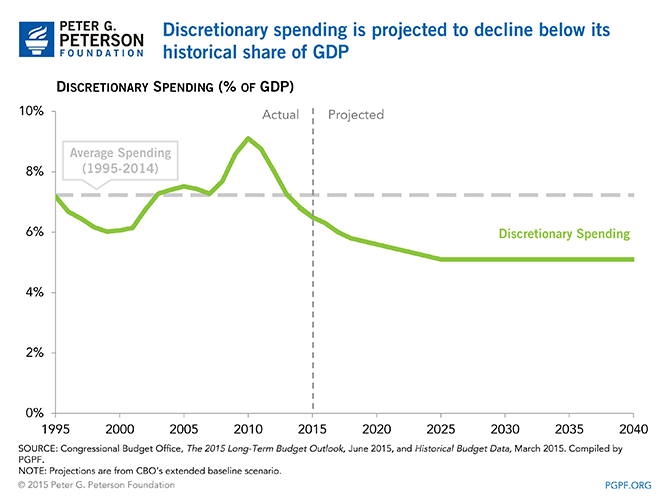You are here
Averting A Shutdown: The Numbers Behind The Last-Minute Budget Bill
On September 30, with just hours remaining before the end of the fiscal year, the Congress passed and the president signed a stopgap budget bill — a continuing resolution (CR) — that funds the government through December 11, but fails to provide any long-term certainty or needed fiscal reforms.
Although the legislation prevents a government shutdown that would have occurred on October 1, it does not resolve the fundamental budgetary logjam among U.S. policymakers. Lawmakers continue to disagree about the total amount of funding for discretionary programs, the split between defense and nondefense discretionary spending, and the allocation of funding to specific programs.
Discretionary funding has been subject to budget caps since 2011. Discretionary programs fund a wide range of governmental activities from national defense to homeland security, food and drug safety, science, education, national parks, affordable housing, and infrastructure. Roughly 90 percent of discretionary funding is capped in 2016, and those caps on regular funding have largely been flat over time. The remaining 10 percent of discretionary funding, which includes Overseas Contingency Operations in Afghanistan and other countries, disaster relief and other emergency programs and program integrity activities, has declined. Those activities are treated as adjustments — or additions — to the caps on regular funding.

The amount of full-year discretionary funding is not yet known for 2016 because the CR funds the government only until December 11, 2015. However, if the Congress were to appropriate funds for the full fiscal year at the same rate as specified by the CR:
- Total discretionary spending would be $1,100 billion in 2016 — $34 billion less than it was in 2014.
- The decline in defense and non-defense discretionary spending would stem entirely from lower funding for cap adjustments — which are activities not subject to the caps.
- For defense, funding for the Overseas Contingency Operations (OCO) would be about $21 billion lower than it was in 2014.
- For non-defense, spending for disasters and emergencies, program integrity, OCO, as well as for changes to mandatory programs in final appropriations bills is projected to be about $17 billion less than it was in 2014.1
- After adjusting for inflation, real discretionary funding in 2016 would be $68 billion lower than it was in 2014 — which would be a 6 percent reduction.2

The caps on discretionary programs will remain in place until 2021 under current law, which will reduce spending on discretionary programs to historic lows. CBO projects that in 2025, total discretionary spending will fall from 6.5 percent in 2015 to 5.1 percent in 2025. At this level, discretionary spending would be nearly 30 percent below its average over the last 20 years, and lower than it has been in any year recorded in its history.

Lawmakers should act now to avoid another self-inflicted fiscal crisis. If they do not act to extend funding beyond December 11th, many government activities will shut down on December 12, 2015. A government shutdown would bring unnecessary uncertainty to an economy that is still recovering from the recession, waste precious tax dollars on shutdown activities and disrupt important government investments in education, R&D, and infrastructure.
The budget battles policymakers have engaged in over recent years have failed to produce reforms that would address the true drivers of our long-term debt. In addition to addressing our immediate spending issues, lawmakers should seek long-term fiscal reforms that address the long-term structural imbalance between revenues and outlays.
1The non-defense portion of OCO largely goes to the Department of State. (Back to citation)
2The estimate uses the total composite outlay deflator published in the President's FY 2016 Budget. (Back to citation)
